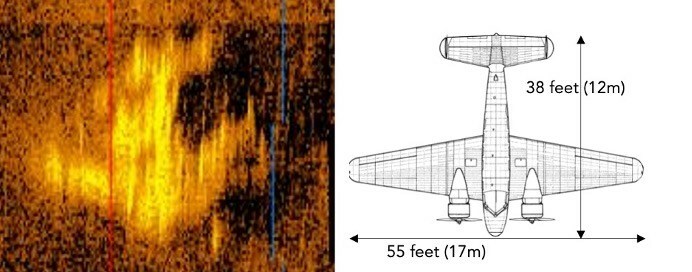SCOTS tech company Clarus Networks Group is playing a key role in uncovering one of the greatest mysteries in aviation history – the disappearance of Amelia Earhart.
Clarus supported South Carolina-based marine robotics experts Deep Sea Vision on an extensive deep-water search mission.
The firm provided high speed satellite internet for the team’s search vessel, allowing them to use sophisticated search equipment in the middle of the Pacific Ocean.
Fast connectivity is otherwise impossible in the Pacific Ocean.

During an attempt to become the first woman to complete a circumnavigational flight of the globe in 1937, Earhart and navigator Fred Noonan disappeared over the central Pacific.
Following a 90 day mission at sea, Deep Sea Vision now believe they have found Earhart’s Lockheed Electra aircraft on the ocean floor, releasing the sonar imagery to the world.
Using an autonomous underwater drone, the HUGIN 6000, nicknamed Miss Millie, Deep Sea Vision searched over 5,200 square miles.
Miss Millie is able to reach depths of 6 kilometres and each search dive lasts approximately 36 hours.
The advanced submersible searches independently and only returns to the surface when a battery change is needed.
Several terabytes of sonar data are collected with each search of the ocean floor, with a team working around the clock to analyse the imagery.
Remote connectivity specialists Clarus Networks Group provided low Earth orbit satellite technology to deliver high-speed internet for the team’s search vessel in the Pacific Ocean.
This allowed Deep Sea Vision’s 16-person crew to transmit and manage data from Miss Millie.
It also improved crew welfare on the long mission by allowing video calls back to shore.
Tony Romeo, CEO of Deep Sea Vision: “Our search mission took us to one of the most remote Oceans in the world.
“Working with Clarus we were able to maintain superfast connectivity.
“This was critical to our mission, allowing us to handle the massive amounts of data sent by our marine robotics and to Facetime with my 6 year old daughter back home.
“We only made the sonar discovery at the tail end of our expedition, so having fast connectivity had a huge impact on keeping crew morale high.
“We are partnering with Clarus for our future search missions, including our return to investigate the site further, hopefully bringing closure to the legacy of an aviation pioneer.”
Chris Schonhut, Director of Maritime & Energy, The Clarus Networks Group, said: “The enormity of [the] mission demonstrates the sheer power of advanced satellite connectivity.
“By installing low Earth orbit satellite internet on the search vessel, Clarus used Starlink Maritime to deliver superfast connectivity to the middle of the Pacific Ocean.
“This advanced satellite connectivity can handle the huge amounts of data produced by advanced marine robotics, as well as supporting the 16-person crew.
“We are proud to continue to support Deep Sea Vision, providing reliable and fast connectivity for their pioneering missions.”
Starlink Maritime delivers download speeds of up to 220 mbps at sea, with upload speeds of 25 mbps and less than 99ms of latency.
This creates new possibilities for navigation, crew welfare, and research.
To cope with conditions at sea, Starlink Maritime has specialised high-performance antennas designed to withstand extreme temperature and weather.
This ensures that connectivity can be delivered even in the most remote, challenging environments.
Clarus also offers a bandwidth management and crew welfare connectivity platform for the maritime industry.
The system also allows for the bonding of multiple networks, such as Starlink and OneWeb, or integrating 4G technology, enhancing IT operation performance at sea.
Deep Sea Vision believes they are one step away from bringing closure to this great mystery and will be keeping all other information, including the exact location, strictly confidential.
Unlocking the mystery of Earhart’s whereabouts is one of several projects for Deep Sea Vision, including a yet to be announced project in the Pacific and a longer-term project in Australia.

